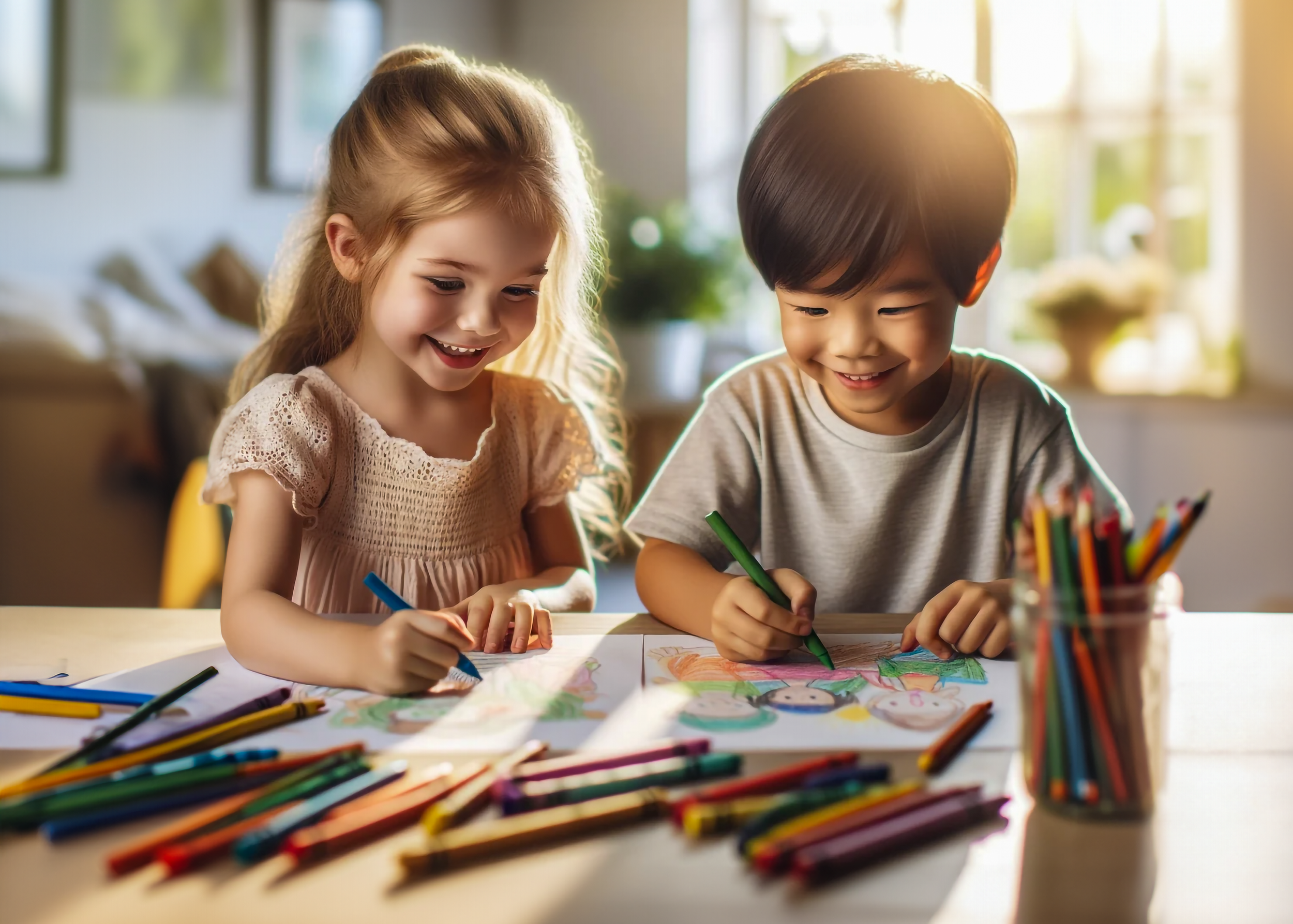Achieve Calm in 10 Minutes: Quick Mindfulness Exercises for Busy Kids
In an era characterized by the buzzing of technology and the fast pace of daily life, children's mental health has become a growing concern. A comprehensive study published in the Journal of Clinical Child & Adolescent Psychology found that mindfulness practices can improve functioning and reduce stress and anxiety among children and adolescents.1 The Calm Kids Club is at the forefront of fostering mindfulness and mental well-being among children.
Mindfulness — the psychological process of bringing one's attention to experiences occurring in the present moment — can be a powerful tool for children's wellness. Research in Developmental Psychology shows that children who engage in regular mindfulness exercises display enhanced social skills and the ability to manage stress more effectively. This is particularly vital for caregivers and educators looking to instill a sense of calm and focus in children's lives. Implementing mindfulness into a child's daily routine need not be daunting.
Here are 10 quick exercises rooted in scientific research that can seamlessly introduce the practice of mindfulness into a child's day-to-day activities:
Deep Breathing Breaks: Encouraging children to take deep, controlled breaths can activate the body's relaxation response. Studies in Pediatrics have shown that deep breathing can reduce anxiety and enhance mood in children.3
Mindful Coloring: Providing children with colouring activities can be a form of meditative practice, as found in research published in Art Therapy: Journal of the American Art Therapy Association.4
Listening Exercises: Playing calming sounds and asking children to focus on what they hear can sharpen their auditory mindfulness, as supported by findings in The Journal of Attention Disorders.5
Body Scan Relaxation: Guiding children through a gentle body scan can increase their bodily awareness and decrease somatic stress, as evidenced in research from The Journal of Behavioral Medicine.6
Gratitude Reflections: Encouraging children to think of things they are grateful for daily can foster positivity and well-being, according to The Journal of School Psychology.7
Nature Walks: Engaging with the natural environment enhances children's mindfulness and reduces symptoms of ADHD, as reported in The Journal of Environmental Psychology.8
Yoga Stretching: Simple yoga poses can be incorporated into a child's routine to promote mindfulness and physical health, as found in studies within The International Journal of Yoga.9
Storytime Visualization: Reading stories with imagery can help children practice visualization and relaxation techniques.10
Mindful Eating: Encouraging children to eat slowly and savour their food can promote a mindful relationship with eating and aid digestion, as per research in The Journal of the Academy of Nutrition and Dietetics.11
Expressive Drawing: Allowing children to draw their emotions freely can be a therapeutic and mindful exercise, supported by findings in The Arts in Psychotherapy journal.12
Mindfulness is a journey, not a destination. It is about the continuous practice of presence and awareness. Integrating these principles into everyday lives can be simple and transformative for those who care for and educate our young ones.
The Calm Kids Club is dedicated to supporting this journey, offering many free tools and resources. To explore further and to become a part of the movement towards a more mindful future for all children, continue to explore www.calmkidsclub.com.
References"Mindfulness-Based Therapy for Children with Anxiety Disorders: A Family-Based Randomized Clinical Trial," Journal of Clinical Child & Adolescent Psychology, 2018."Mindfulness and Children's Social Skills: Evidence from a Randomized Controlled Trial," Developmental Psychology, 2017."Controlled Breathing Practices for Treatment of Persistent Asthma," Pediatrics, 2000."Reducing Anxiety Through Coloring: A Pre- and Post-Test Design in an Undergraduate Anatomy Course," Art Therapy: Journal of the American Art Therapy Association, 2016."The Effects of Mindful Awareness Practices on Executive Functions in Elementary School Children," Journal of Attention Disorders, 2010."A Randomized Controlled Trial of Mindfulness Meditation Versus Relaxation Training: Effects on Distress, Positive States of Mind, Rumination, and Distraction," The Journal of Behavioral Medicine, 2007."Gratitude and Well Being: The Benefits of Appreciation," The Journal of School Psychology, 2010."The Cognitive Benefits of Interacting With Nature," The Journal of Environmental Psychology, 2008."Yoga for Schoolchildren Enhances Body Flexibility and Mindfulness," The International Journal of Yoga, 2019."Mindfulness Training Improves Attention in Children: A Controlled Study," Journal of Cognitive Enhancement, 2018."Mindful Eating and Weight Loss, Results from a Randomized Trial," Journal of the Academy of Nutrition and Dietetics, 2017."Expressive Drawing: A Pragmatic Randomized Controlled Trial Exploring Outcomes for People With Chronic Pain," The Arts in Psychotherapy, 2014.


